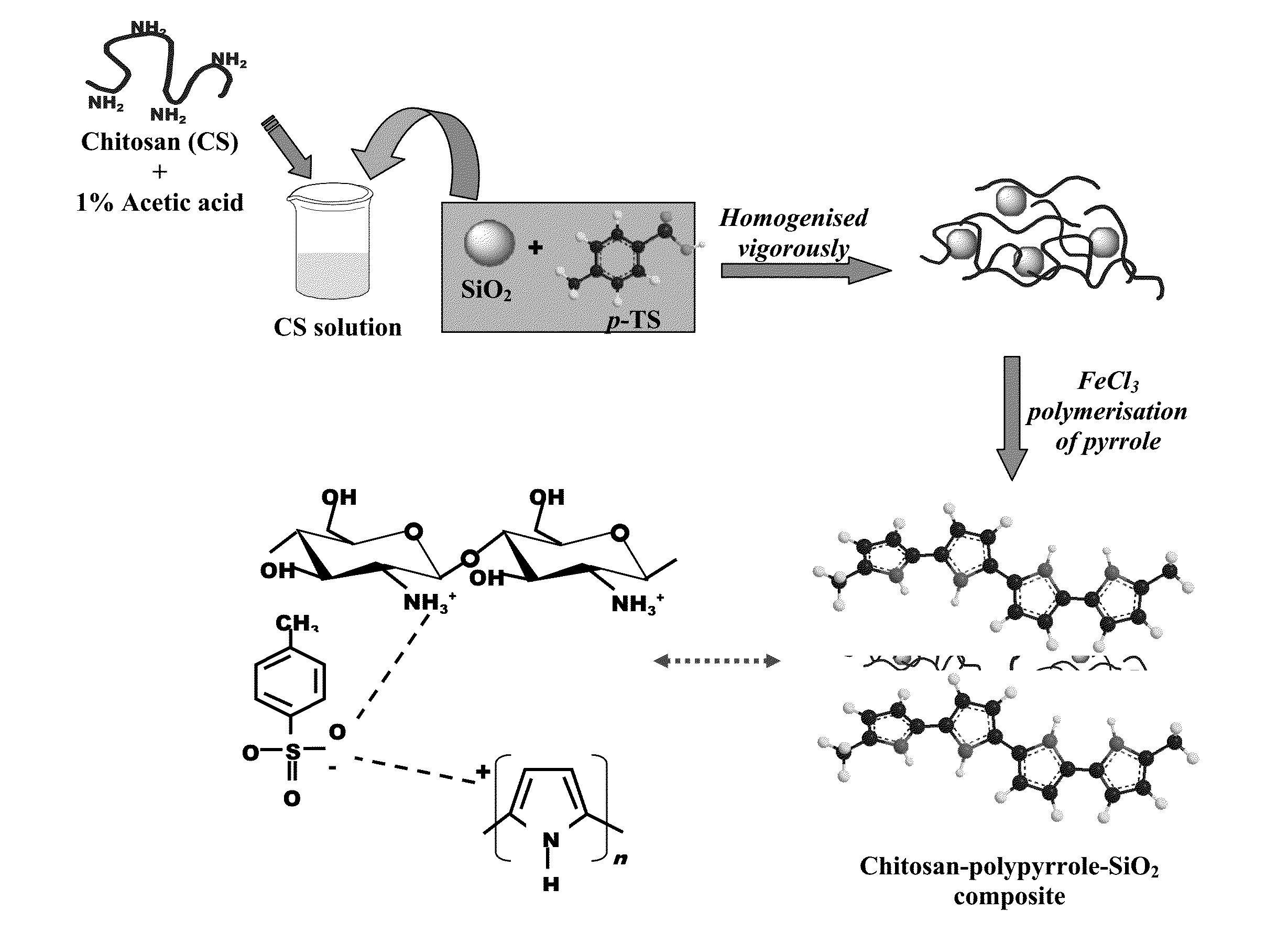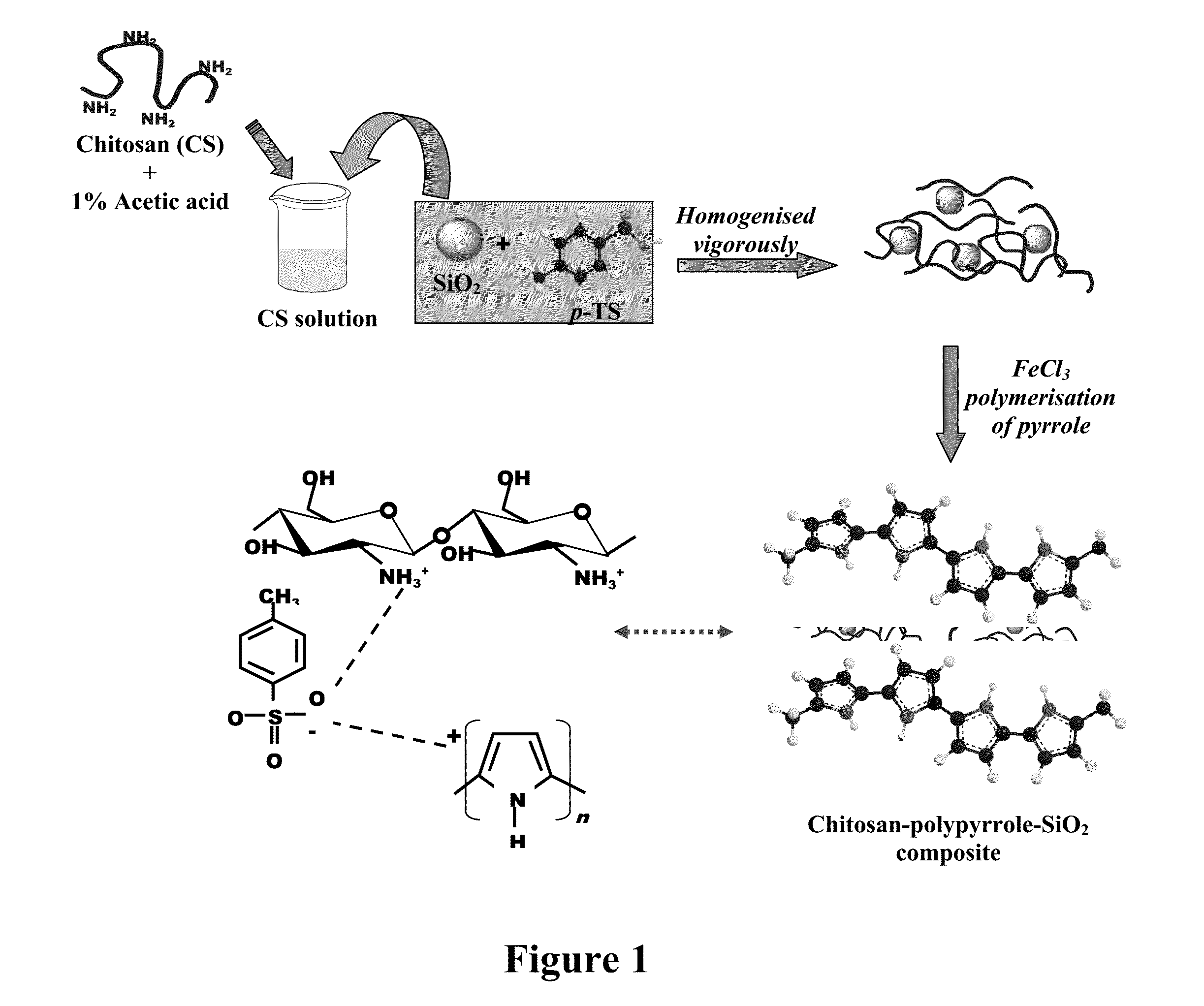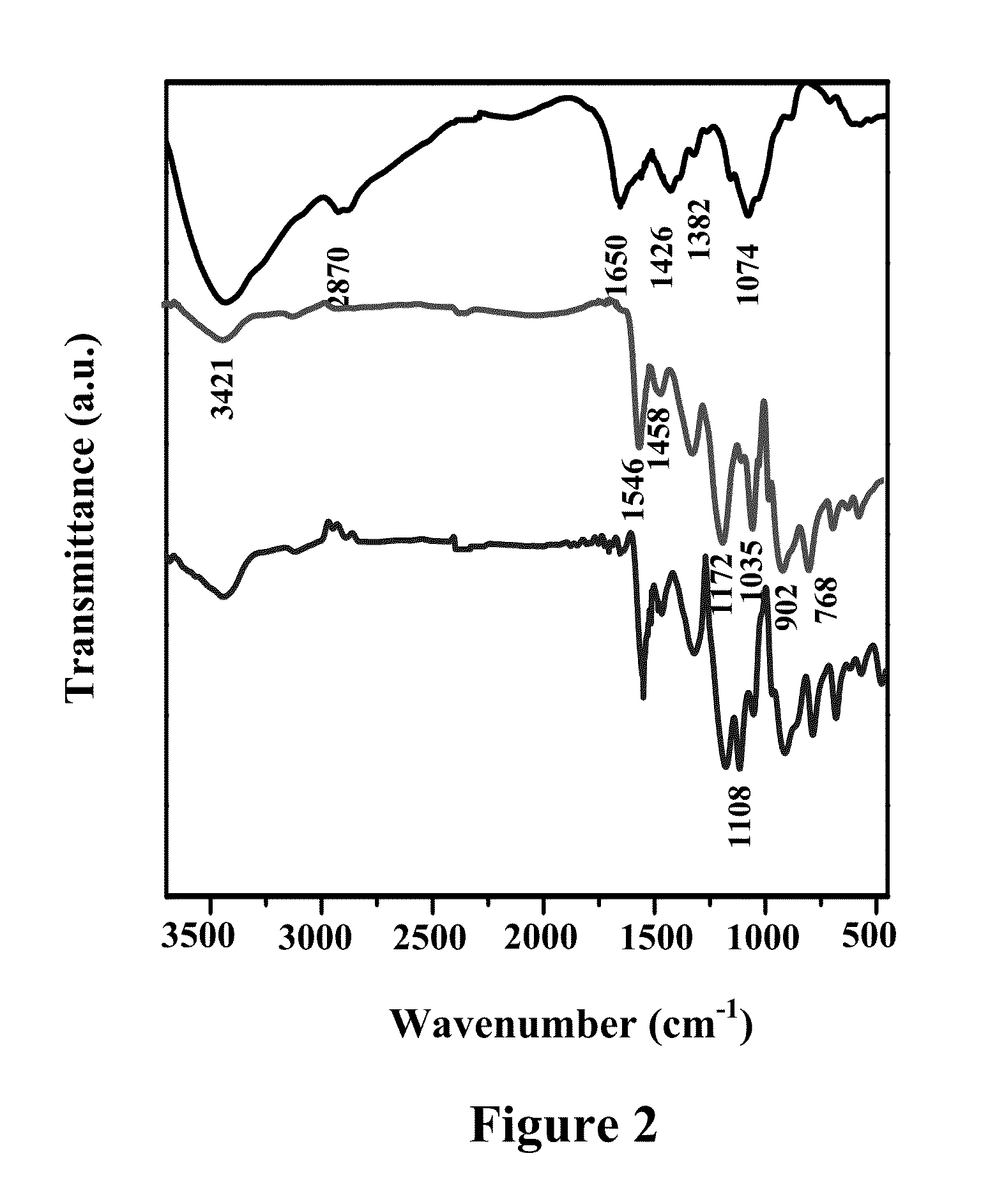Self healing anti corrosive coatings and a process for the preparation thereof
a coating and self-healing technology, applied in the field of self-healing anti-corrosive coatings, can solve the problems of limiting the service life of corrosion in various engineering applications, preventing the conversion of coatings, and reducing the design quality of coatings with corrosion protection efficiency equivalent to their traditional counterparts, so as to and improve the corrosion resistance of coatings.
- Summary
- Abstract
- Description
- Claims
- Application Information
AI Technical Summary
Benefits of technology
Problems solved by technology
Method used
Image
Examples
example 1
Synthesis of chitosan-polypyrrole-SiO2 Composite
[0064]The synthesis of mono dispersed uniform sized SiO2 particles were carried out by hydrolysis of tetra-ethyl orthosilicate (TEOS) in ethanol using ammonia as a catalyst. Chitosan-polypyrrole-SiO2 composites were synthesized by chemical polymerization of pyrrole in presence of 1.0 wt % chitosan solution (in acetic acid) as shown in FIG. 1. For this, a mixture of 1 gm chitosan (Cs), 1 gm acetic acid and 99 gms of deionized water was stirred till a clear pale solution (pH ˜3) of chitosan acetate appears. The synthesized silica particles were dispersed in the chitosan acetate solution followed by addition of sodium salt of p-toluene sulphonate (p-TS). This suspension was allowed to stir for 30 minutes. It is reported that chitosan interacts with anionic surfactants by electrostatic attraction to form soluble complexes. Thereafter, pyrrole was introduced followed by drop by drop addition of freshly prepared FeCl3 to initiate the polymer...
example 2
Development of Coatings
[0065]Mild steel specimens were polished metallographically by grinding with emery papers of 120, 600 and 800 grit size to attain a smooth finish, prior to the coating treatment. The powder coating formulations prepared in example 1 were blended with epoxy resin. A homogenous mixture of well dispersed composites in epoxy was obtained after ball milling. The coatings were applied on mild steel specimens using an electrostatic spray gun held at 67.4 KV potential with respect to the substrate (grounded). The powder coated mild steel specimens were cured at 150° C. for 30 minutes. The adhesion of the coating was tested by cross cut adhesion test and bend test as per IS101 Part V Sec(2). The steel specimens coated with epoxy coating were designated as EC, epoxy with 1.0 and 2.0 wt % loading of polypyrrole-SiO2 composite coatings as PS1 and PS2 respectively. The epoxy coating with 2.0 wt % loading of chitosan-polypyrrole composite were designated as (CP) and epoxy w...
example 3
Characterization of the Polymer Composites
[0066]The Morphology and elemental analysis of the composites were conducted using FESEM (NOVA NANO SEM 430, FEI, USA) coupled with energy dispersive X-ray spectrometer (EDS). TEM (Tecnai TMG F30, FEI) was employed to analyze the size and distribution of SiO2 particles in the polymer matrix. FTIR spectra (Model-Nicolet 5700) were recorded in the spectral range of 4000-600 cm-1 to analyse the chemical structure of the composite. X-ray diffractograms (XRD) were obtained using Bruker, D-8 advanced diffractometer, operating with CuKα radiation (λ=0.154 nm) generated at a voltage of 35 kV and current of 30 mA at a scan rate of 1° / min. Thermogravimetric analysis (TGA) and Differential Scanning calorimetry (DSC) were performed using a Mettler Toledo TGA / SDTA 851 and DSC822e, respectively with a heating rate of 15° C. min-1 in nitrogen atmosphere. FESEM and TEM micrographs of the chitosan-polypyrrole composite (CP) reveals a clustered structure comp...
PUM
| Property | Measurement | Unit |
|---|---|---|
| thickness | aaaaa | aaaaa |
| reaction time | aaaaa | aaaaa |
| current | aaaaa | aaaaa |
Abstract
Description
Claims
Application Information
 Login to View More
Login to View More - R&D
- Intellectual Property
- Life Sciences
- Materials
- Tech Scout
- Unparalleled Data Quality
- Higher Quality Content
- 60% Fewer Hallucinations
Browse by: Latest US Patents, China's latest patents, Technical Efficacy Thesaurus, Application Domain, Technology Topic, Popular Technical Reports.
© 2025 PatSnap. All rights reserved.Legal|Privacy policy|Modern Slavery Act Transparency Statement|Sitemap|About US| Contact US: help@patsnap.com



